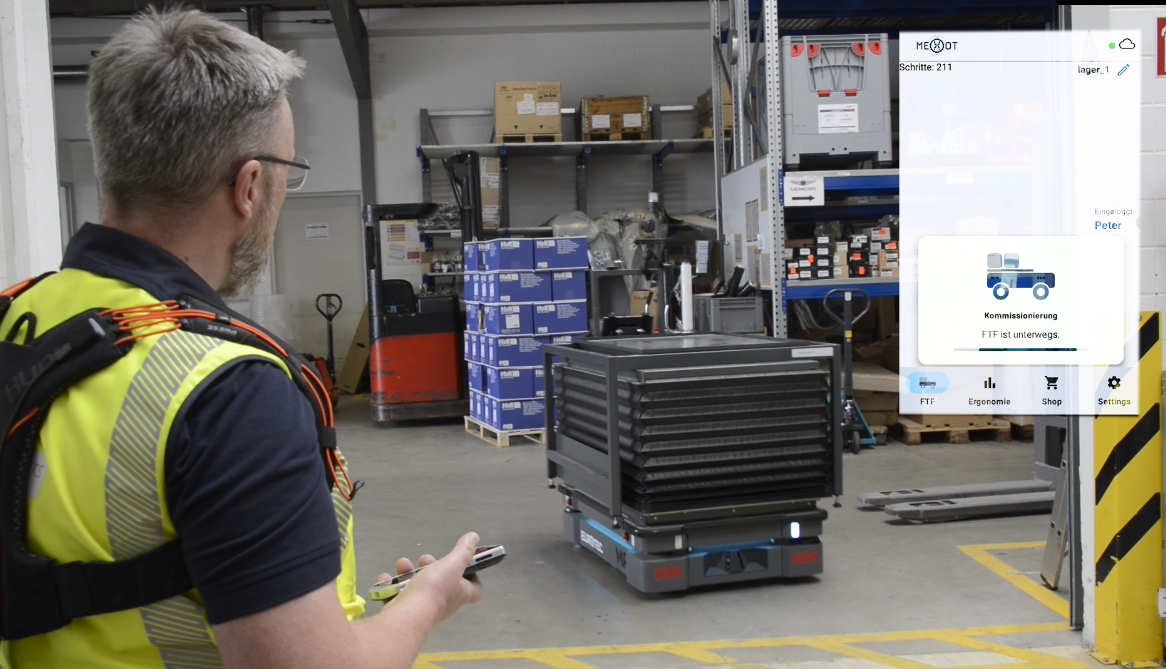At BLG’s site in Bremerhaven, various vehicle reconditioning activities are carried out. Many of these tasks are physically demanding, such as lifting heavy loads in picking operations or performing assembly work. The increased physical strain leads to high employee absence rates, which in turn reduces overall workplace productivity. Additionally, manual material provision results in non-value-added time portions. The MEXOT project was specifically designed to address these challenges, focusing on reducing employee strain and optimizing processes.
Through the project, new solutions were developed to reduce physical strain in vehicle reconditioning within automotive logistics and to increase efficiency. To this end, sensory exoskeletons and autonomous transport systems were combined to improve ergonomic working conditions and optimize material flow.
Exoskeletons physically relieve employees, and an integrated sensor system was developed to monitor posture in real-time using machine learning algorithms. A smartphone app visualizes ergonomic posture and promotes ergonomic work practices through a gamified incentive system.
In addition, an autonomous transport system enables a semi-automated material flow. Employees can request the autonomous mobile robot for picking via an app, which then automatically switches to “Follow-Me” mode and follows the employee. This reduces walking distances during picking, and the picked materials are transported onward. In assembly, employees can register at their workstations via the smartphone app and start assembly tasks using a QR code scan. The system then automatically selects the necessary parts and brings them to the correct workstation. An integrated lift table at the workstation ensures ergonomic material handover, with the table height adjusted to both load height and the employee’s body size.
Coordination and synchronization of all subsystems are managed through the ComFlow software framework (https://www.comflow-project.de/), which enables intuitive no-code programming and was further developed within the project for dynamic environments with close human-technology interaction.
The final project video illustrates the outcomes and demonstrates how the technologies developed in the MEXOT project create future-oriented workplaces that combine efficiency and ergonomics.

